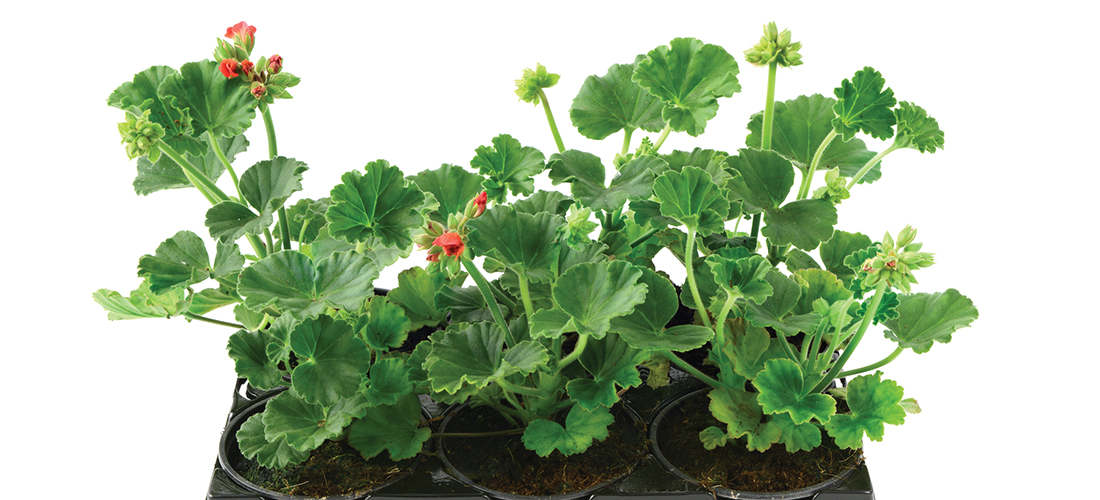
When the deep freeze finishes
By Jan Wheaton
I don’t love to garden. The same way I don’t love to write. But my garden beckons to me the same way an empty, white page does: Put something here. I know it’s going to be painful, but oh, those rewards. In one way, gardening is a lot like writing — it’s mostly about putting the right things in the right place at the right time.
The right time for setting out annual bedding plants is April 15. If the weather has continued to be as warm as it was in February, some of you might not have waited. But do wait if you haven’t. There is not much to be gained from planting earlier because the plants won’t do much until the soil heats up some, and cold, damp soil can lead to rot. In the meantime, do your groundwork, literally, without which you will not achieve optimum results and reward for the money and effort you spend on your garden.
When I stick my trowel into my Sandhills garden, I cannot help but remember somewhat longingly the soils of gardens past: the black, fine-grained and fertile alluvial soil in Edmonton, Alberta, Canada — soil that crumbled in your fingers like a chocolate brownie and grew just about anything you’d put in it, once it warmed up, which was not until well past their last freeze date in mid-May. We were often lulled into a false sense of security up there, too, when April brought waves of warm, dry weather across the plains. I remember the chastening experience of watching snow fall on my freshly planted petunias on Victoria Day, May 24. Also never to be forgotten are the deep, dark brown topsoils of Kansas, evolved over eons of prairie grasslands, soil that was pure joy to stick your hands into. But back to the soil at hand. “Amending your soil is the most important thing you can do,” according to Taylor Williams, Moore County Agricultural Extension agent. And that starts with a soil test. I box up my samples of gray loamy sand, about which the best thing that can be said is that it drains well, and send them off to N.C. State for analysis. And I feel as good about myself as if I’d just written the first paragraph of a story.
While you’ve got your gardening pants on, do some spring cleaning in those flowerbeds. Cut back and clean out any dead foliage from last year, and pull up those emerging weeds before they get too comfortable. To help with fertility and moisture retention, add a 2-inch top dressing of composted organic matter or well-seasoned manure. For new beds, especially perennial flowerbeds, add 6 inches. You may be tempted to mix that fine, fluffy stuff down into the sandy grit, but don’t. Williams warns tilling the soil, “leads to soil compaction and makes it lose air. Just put the compost on top and the bugs and organisms will do the work of moving it down into the soil.” To be sure you don’t put plants in the wrong places, take a sun survey of your garden and flowerbeds. “A plant in the ‘wrong place’ will be more susceptible to pests and disease,” cautions Richmond County horticultural agent Paige Burns. Using a copy of a recent property survey of your lot or an online, interactive garden layout plan, draw in or indicate where you have major shade creators (trees, fences, house, etc.). Walk around and note at each hour from 9 a.m. to 5 p.m. where your sun and shade conditions correspond to requirements specified on plant labels: full sun, part sun, full shade and part shade. You can use these guidelines to help figure out exactly what these mean:
Full sun means the plant should have at least six hours direct, unfiltered sun, daily. The hours do not necessarily need to be together, but three or four should be in the afternoon.
Part sun means the plant needs at least three hours of direct, unfiltered sun, but it wants six, preferably in the middle of the day and late afternoon. Or it could have only dappled sun a large part of the day.
Part shade means your plant typically needs three hours of direct sunlight per day, and it doesn’t really want, but might tolerate up to six if it’s in the morning or early afternoon.
Full shade means the plant should not be in direct sunlight for more than three hours, and that should be morning sun only. Full-shade plants can thrive in dappled/filtered sun or light shade for several hours a day. But deep shade means no sun, direct or filtered.
Indicate locations (with dimensions) where the sun is full, direct or filtered and whether it occurs in morning or afternoon — and keep in mind how these areas will shift as the sun gets higher in midsummer and that afternoon sun is more intense and creates more heat than morning sun. Direct sun means no blockage or filtering of sun whatsoever. Light shade is found in the shadow of a building or wall, where no direct sunlight strikes, but there is light all around. Dappled or filtered shade is found under tree branches or latticework where the pattern of sunlight shifts throughout the day, and full shade is found under trees or structures with no direct light penetrating during the day. These variations are extremely important to your plants.
Also take note of drainage conditions (inclines, low areas, higher areas) and where soil may be sandier or have more organic matter. Most labels will specify a plant’s drainage needs and tolerance.
When you start shopping, the types and varieties of plants can be overwhelming, hence the value of your site plan — it will help you eliminate the plants that won’t work for you. Read the label in containers of plants that interest you, and match their sun/shade requirements, drainage requirements, ultimate size, and space requirements to your plan. This is especially important for herbaceous perennial plants. These plants will get bigger every year, and you don’t want to have to pull them out or move them in a few years.
Now is a good time to buy and plant herbaceous perennials, many of which bloom in April. They can be planted even before the last freeze date and actually would prefer getting settled in the ground before it heats up too much. Perennials are a source of renewable gratification, coming back each year as they do and bringing early color and interest into your flowerbeds. One of my first thrills of spring is to see the tender green shoots of my day lilies pushing back up through the soil after dying back last fall. I consider it a miracle.
Perennial ground covers are useful as well as attractive — they help keep out weeds. I particularly like the evergreen ones. Ajuga reptans (bugleflower) is excellent for moist areas in part shade, forming a low, dense mat of dark green foliage and producing blue flowers in mid spring. For sun, it’s hard to beat phlox subulata (thrift), a tough little plant that’s easy to grow and spreads nicely, producing an abundance of bright blooms from March to May. Taller perennials will also add some weed-inhibiting shade and break up the monotony of a swath of annuals.
The label might not specify whether the plant is a cool-season or warm-season annual, but you need to know this. Cool-season annuals, such as geraniums, petunias and snapdragons, will not tolerate full sun when our temperatures climb into the 90s. They will gnarl up and produce only small, dull flowers, if any. I finally pulled mine up in late July last year to put them out of their misery and replaced them with some plastic daisies from Michaels. If you want geraniums or other cool season annuals, keep them in dappled sun or out of the sun altogether from early afternoon on. Plant warm-season annuals, such as blue daze, four-o’clocks, vinca and lantana, in your sunbaked exposures. They may not look as showy in the garden center in the spring, but these little troupers will stay in bloom all summer, looking fresh and pleased on the hottest of afternoons. And for showy on a sun-drenched deck, mandevilla is my go-to.
Now, begonias: This is one of the best and prettiest plants for versatility, ease and showmanship; but please, no matter what any plant seller tells you about “sun begonias,” don’t plant them in full sun. Sure, you see them in large, dense plantings all over town; and from a distance, they look like they’re going gangbusters. But get up close and you’ll see tortured-looking plants with brittle, shrunken foliage and tight little blooms. Keep begonias in part shade or filtered light and you’ll see a much happier plant, with full foliage, and luminous flowers. Plant the semperflorens in beds, but also try some specimens, like the dragonwing, in pots. And bring them inside about the first of November. Begonias are actually perennials, but are too tender to survive outdoors in our winter. Put them in front of a south or west window, water as needed, cut back the foliage to keep it from getting leggy, and next April set them back outside.
At the garden center, carefully inspect each plant before you put it in your cart. Peer under leaves and along stems for insects: look for aphids sucking nectar from a stem of a soon-to-be wilted leaf; and at the base of leaves, look for small, white cottony blobs, under which hundred of mealybugs are getting ready to hatch and wreak havoc on the plant. You do not want to take these guys home and introduce them to your other plants.
Also check to see if the plant is root bound by turning the container over and looking for roots poking out the drainage holes. Gently squeeze the bottom of a plastic container and ease the plant out. Don’t buy if you see roots winding around in a solid wall or matted on the bottom, which will require surgical intervention before planting and long periods of intensive care. Yellowed or chewed leaves, spindly stems and wilt are signs of infestations, disease or other abuse, and they do not bode well for the future of the plant.
If you haven’t yet got the results of your soil test, and you’re ready to plant, add two things in addition to the top dressing of organic matter: first, lime to combat our soils’ chronic acidity and second, a little high phosphate fertilizer (preferably organic) in the hole you dig for the plant. New plants need phosphorus for root production, and lime should always be added once a year. When you get your soil test results, follow the recommendations provided to be sure you are feeding your plants what they need and not giving them something they don’t need or shouldn’t have.
And keep in mind that plants react to stress a lot like we do: lack of energy, susceptibility to virus and infections, and poor performance in general. So don’t plant in the heat of the day, don’t mess with their roots, give your plants some space and don’t under or over water them. (Their feet don’t like to be cold and wet any more than ours do.) Tuck those plants into their beds with a soft blanket of mulch, but don’t suffocate them
Now get yourself the drink of your choice and settle into your rocker on the porch or hammock in the trees and admire your work.
Maybe I do love to garden. PS
For questions or help with plant choices, fertilizer applications, and other concerns, call the Help Line at the Moore County Cooperative Agricultural Extension Office between 10 a.m. and 12 p.m., weekdays through October at (910) 947-3188. Walk-in consultations are available during the same hours at the Agricultural Center, 707 Pinehurst Ave., Carthage. Free sample boxes, instructions and information sheets are available as well. Information on soil samples can be found at http://www.ncagr.gov/agronomi/uyrst.htm.
Jan Wheaton is a Pinehurst resident, native North Carolinian, unpublished novelist, and the compiler of PineStraw’s calendar.





